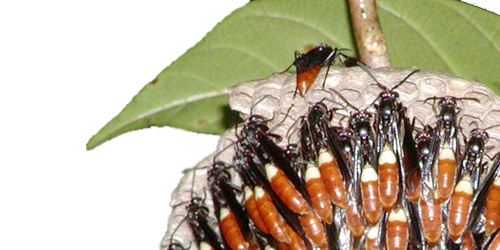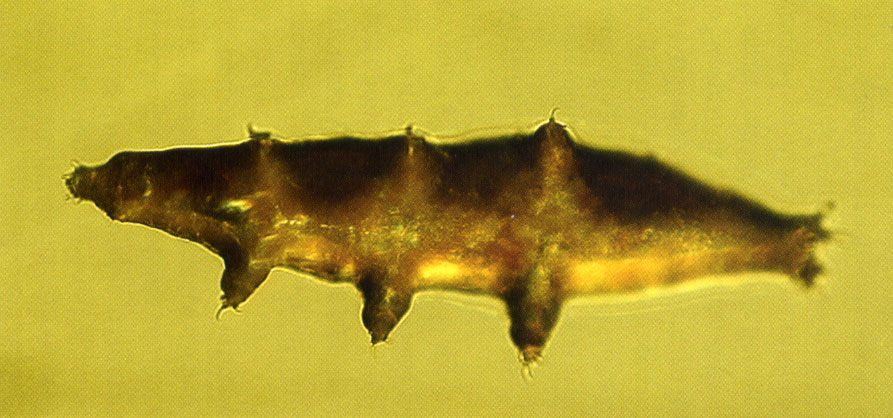The last couple of days have been rough, and I couldn’t post. But now it seems like the Flagyl is finally suppressing the Clostridium difficile infection. These bacteria—like so many other organisms—can shut down most of their metabolic activity when environmental conditions are unfavorable, and while in this state, they are essentially impervious to antibiotics. These spore forms can stretch their legs and start cranking our their toxins again once the antibiotics are out of my system, so relapse is always an issue. I’ll be cycling on and off the Flagyl for the next few months to deal with this likelihood . . . that, and eating lots of gram-positive, “friendly” bacteria in the form of tons of yogurt.
This reminds me of a very cool group of organisms, sometimes called water bears: the tardigrades. Tardigrades are the closest relatives of the arthropods, and they haven’t changed much in a long time (the 90 million year old fossil tardigrade shown below looks essentially like modern species).
Tardigrades can hunker down into a spore-like condition called cryptobiosis, and in this condition they can live for centuries (yes, centuries) with no food or water. In this state, they can survive intense radiation and even the vacuum of space. No doubt, this ability is one reason they haven’t changed much: If you can survive all environmental changes as you are, there won’t be much evolution going on. Killing these guys could be nearly impossible when they’re hunkered down. So, to put in another way, as bad as C. difficile might be, I’m just glad I don’t have a colony of tardigrades up my butt (thankfully, they don’t cause disease).























